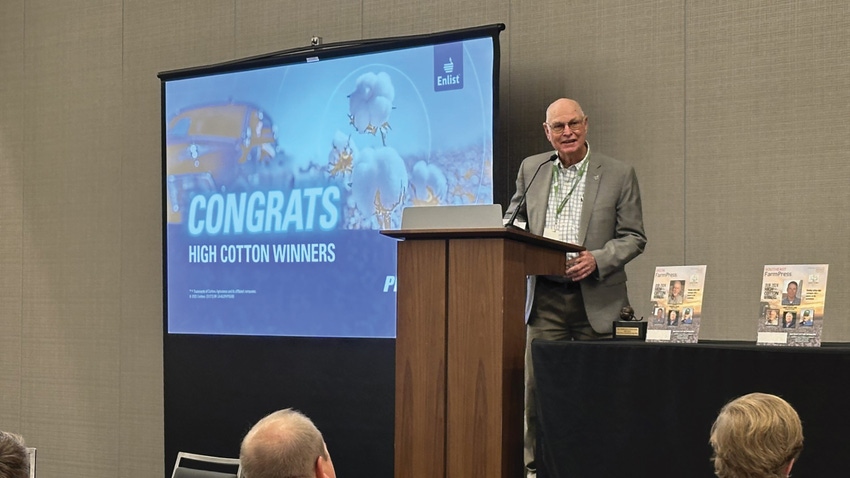
Trade show season is always a good opportunity to catch up with folks you might only see once or twice a year. All the new gadgets, gizmos, and services aside, these events are golden for the story leads they produce.
As I write this I just returned from the Mid-South Farm and Gin Show in Memphis. I was there to present our annual High Cotton award to Buckey, Arizona cotton farmer Jerry Rovey, who joined an elite crowd of U.S. cotton farmers that Farm Press honors each year for their sustainability efforts.
Rovey was honored at our annual awards breakfast with growers from across the Cotton Belt. Each had their own story, but they’re all similar. As U.S. cotton acreage declines – the combined acreage of cotton in California and Arizona last season did not exceed 200,000 for the first time in decades – it’s High Cotton winners like Edward Greer of Louisiana, Andy Wendland of Alabama, Richard Gaona of Texas, and Rovey, who’s sustainable farming practices are exemplary.
The gin show is a great opportunity for me to see a different farming focus than I’m accustomed to in the West. Surely the road trip gave me a chance to see farmland in places like Arkansas, which doesn’t look like it suffers the same water woes as parts I’m more familiar with. Meeting nice people from other parts of the country and enjoying great food is always a bonus.
One can never go wrong meeting with and learning from folks from outside your local sphere. I’m sure fellow military veterans can attest to this. The exposure to different cultures, foreign and domestic, is worthwhile.
One thing that struck me at the gin show was a trade talk between agricultural commissioners from Tennessee, Mississippi, Alabama. During the hour-long panel discussion, they talked up their efforts to promote their primary agricultural products globally.
Andy Gipson, the commissioner of the Mississippi Department of Agriculture and Commerce, talked up that state’s lumber production and how the state’s management of trees differs drastically from California. Forestry products are Mississippi’s third-largest segment of its agricultural economy, behind poultry and soybeans, and is the second leading export product from the state behind cotton.
“We have to harvest our trees to keep them healthy,” he said.
Gipson also pointed out something I haven’t heard yet from representatives of the large export commodities produced in the West. India has apparently surpassed China in growth as family sizes there increase.
“India is also a free country,” he said.
Those kinds of opportunities and foresight should bode well for U.S. agricultural efforts as we continue to produce copious amounts of food fit for foreign markets. I’m sure other U.S. commodities could take a cue from Gipson’s message here and figure how to get more of our agricultural goods exported to growing nations like India.
About the Author(s)
You May Also Like






